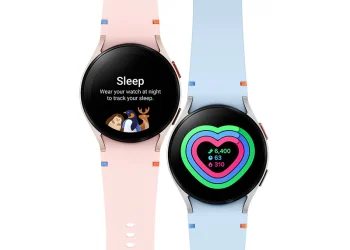The Samsung Galaxy S25 lineup is here, and it aims to build on the success of its predecessors with a blend of modest hardware upgrades and significant strides in software and AI capabilities. While the Galaxy S25 Ultra gets the lion’s share of upgrades, the S25 and S25+ retain a design philosophy that closely mirrors last year’s models, with a few tweaks to keep things fresh. Here’s our in-depth hands-on review of Samsung’s latest flagship devices.
Design and Build
Galaxy S25 Ultra
The Galaxy S25 Ultra sports the most noticeable design changes in the lineup. While maintaining its premium build, the Ultra now features:
- Thinner bezels: Reduced by 15%, enabling a slightly larger 6.9-inch Dynamic AMOLED 2X display without increasing the phone’s overall footprint.
- Lighter and narrower frame: At 218g and 8.2mm thick, it’s easier to handle despite the larger screen.
- Improved durability: It uses Corning Gorilla Glass Armor 2 on both front and back, paired with a titanium frame, offering 29% better drop protection.
The S25 Ultra retains its familiar camera-centric design, although the lenses now protrude slightly more due to the thinner chassis. Color options include Titanium Silver Blue, Titanium White Silver, Titanium Green, and Titanium Black, with online exclusives like Jet Black and Jade Green.
Galaxy S25+ and S25
The S25+ and S25 carry forward the design language of their predecessors, with:
- Slightly slimmer profiles: Both devices are 0.4mm thinner.
- Continued use of Armor Aluminum frames and Gorilla Glass Victus 2 for protection.
- Four standard colorways: Navy, Icy Blue, Mint, and Silver Shadow, alongside exclusive options like Coral Red and Pink Gold.
These devices don’t feel as innovative as the Ultra, but they still maintain the premium look and feel expected from the Galaxy S series.
Display
- S25 Ultra: A 6.9-inch Dynamic AMOLED 2X panel with 1440x3088px resolution, 120Hz adaptive refresh rate, and an industry-leading peak brightness of 2,600 nits. The display also incorporates next-gen DX anti-reflection coating, enhancing sunlight legibility.
- S25+: Slightly smaller 6.7-inch Dynamic AMOLED 2X display, offering the same peak brightness and adaptive refresh rate.
- S25: A 6.2-inch LTPO AMOLED 2X display with a resolution of 1080x2340px, catering to users who prefer compact devices.
Performance
All three models are powered by Qualcomm’s Snapdragon 8 Elite for Galaxy (3nm) chipset, an overclocked version exclusive to Samsung:
- Clock speeds: Two high-performance Oryon V2 Phoenix L cores running at 4.47 GHz, up from 4.32 GHz.
- GPU: Adreno 830, optimized for higher clock speeds.
- Benchmarks:
- GeekBench multi-core: The S25 Ultra scored 9,846, while the S25+ and S25 posted 9,435 and 10,050, respectively.
- 3DMark Wild Life Extreme: The S25 Ultra scored 5,573, outperforming most competitors.
The S25 lineup also benefits from improved NPU (Neural Processing Unit) performance, enabling more robust AI functionalities.
Camera
Galaxy S25 Ultra
The Ultra offers the most notable camera upgrade:
- 50MP ultrawide sensor: A step up from the 12MP unit in the S24 Ultra, with a wider f/1.9 aperture for improved low-light performance.
- The rest of the setup includes:
- 200MP main sensor with Laser AF and OIS.
- 50MP telephoto lens with 5x optical zoom.
- 10MP telephoto lens with 3x optical zoom.
- Video capabilities:
- 8K at 30fps, 4K at up to 120fps, and improved HDR10+ support.
Galaxy S25+ and S25
The S25+ and S25 share the same camera hardware:
- 50MP main sensor, 10MP telephoto with 3x optical zoom, and 12MP ultrawide sensor (no autofocus).
- AI-driven enhancements via the Snapdragon 8 Elite ISP, promising better low-light video and improved computational photography.
New Features
- AI Audio Eraser: Removes unwanted background noises from videos.
- Galaxy Log Mode: A professional-grade video recording format for advanced color grading.
- Enhanced Portrait Studio Mode: Optimized for portrait stills and videos.
Battery and Charging
- Galaxy S25 Ultra: A 5,000mAh battery with 45W wired charging (65% in 30 minutes) and 15W wireless charging.
- Galaxy S25+: 4,900mAh, maintaining the same charging capabilities as the Ultra.
- Galaxy S25: 4,000mAh, with a slightly slower 25W wired charging (50% in 30 minutes).
Software: One UI 7.0
The Galaxy S25 lineup debuts One UI 7.0, based on Android 15, with a focus on personalization and AI:
- AI Select: Context-aware analysis of on-screen content for tailored actions.
- Cross-App Actions: Enables complex tasks, such as searching for a restaurant, navigating via Google Maps, and sharing locations seamlessly.
- Now Brief and Now Bar: Provides daily summaries and contextual updates directly on your lockscreen.
Samsung ensures 7 years of Android updates, making these devices a long-term investment.
Additional Features
- S Pen on the Ultra: Loses Bluetooth and gesture support, now focusing purely on productivity tasks.
- Connectivity:
- Wi-Fi 7, Bluetooth 5.4, and UWB (Ultra-Wideband) (Ultra and Plus models).
- The S25 lacks UWB and offers 128GB base storage, unlike its siblings.
Pricing and Availability
- Galaxy S25 Ultra: Starting at €1,450/£1,250.
- Galaxy S25+: Starting at €1,150/£1,000.
- Galaxy S25: Starting at €900/£800.
Early Verdict
The Galaxy S25 series offers a solid, albeit incremental, upgrade over its predecessors. Key highlights include:
- Improved AI capabilities with One UI 7.0.
- A significant camera upgrade for the Ultra.
- Snapdragon 8 Elite delivering unparalleled performance.
However, the S25 and S25+ feel somewhat neglected, with minimal changes to hardware. Samsung’s focus on AI and software may pay off in the long run, but for users seeking hardware innovations, the competition from Chinese brands could prove more appealing.
Stay tuned for our full in-depth review and camera comparisons!












